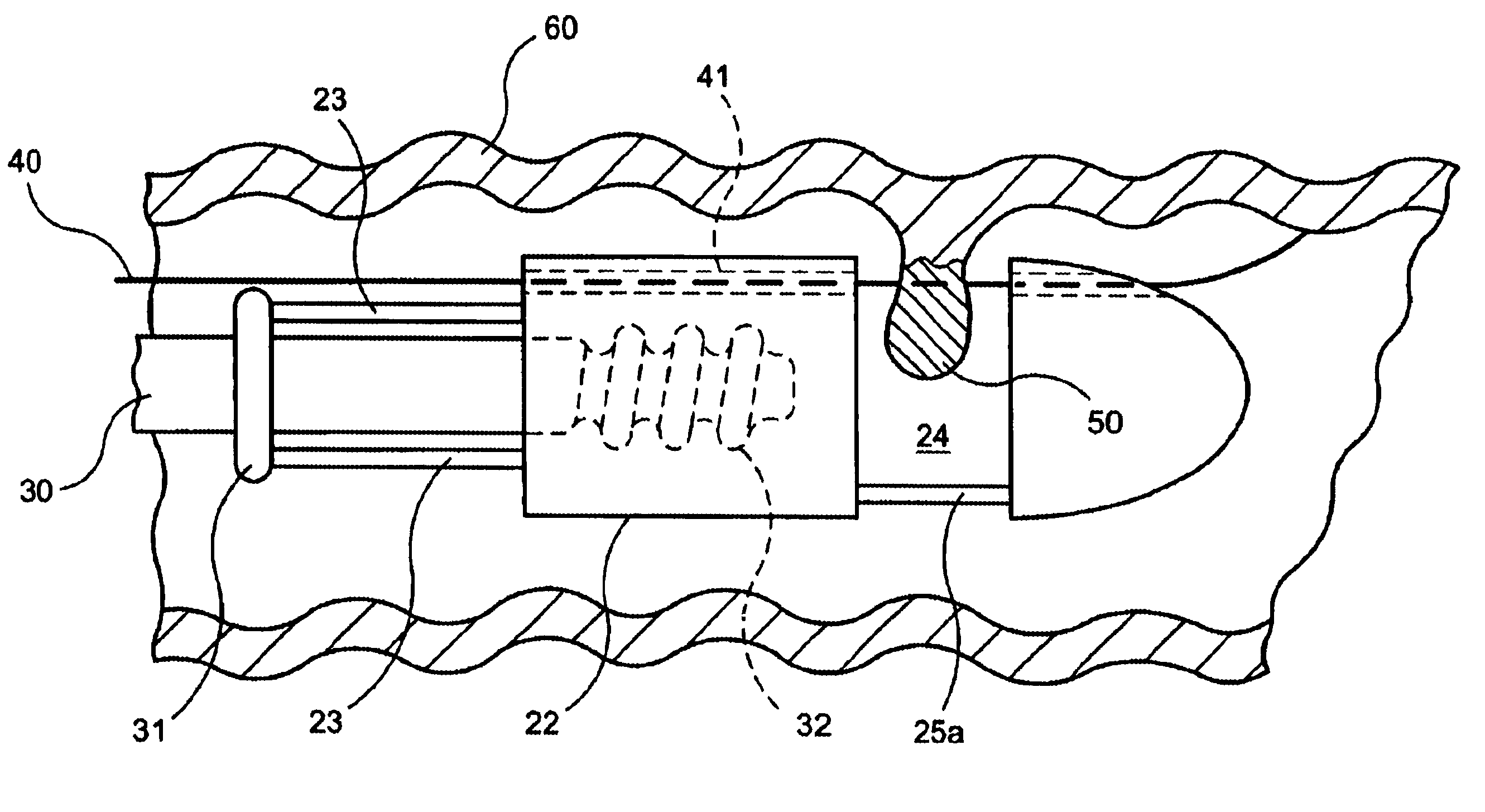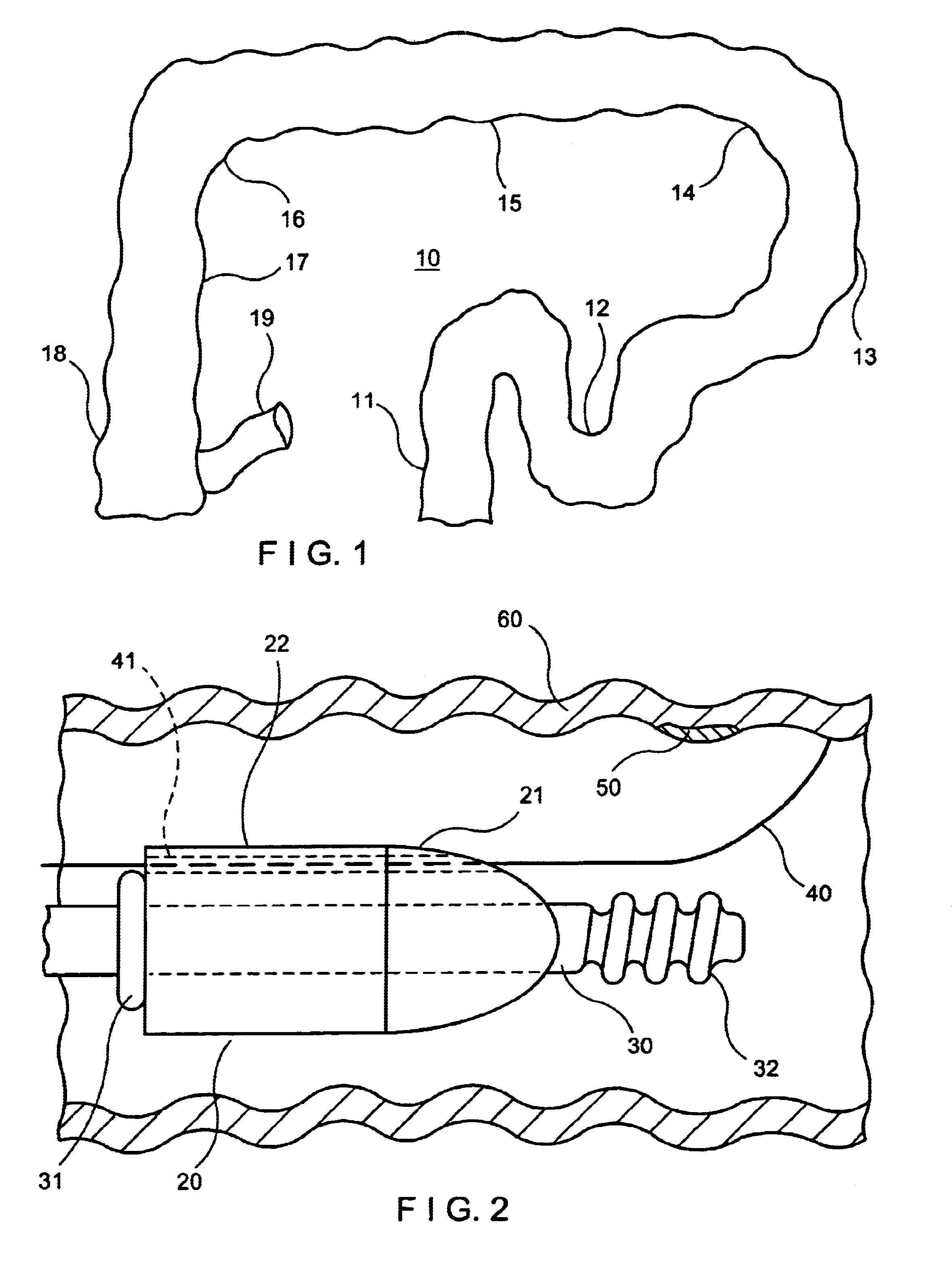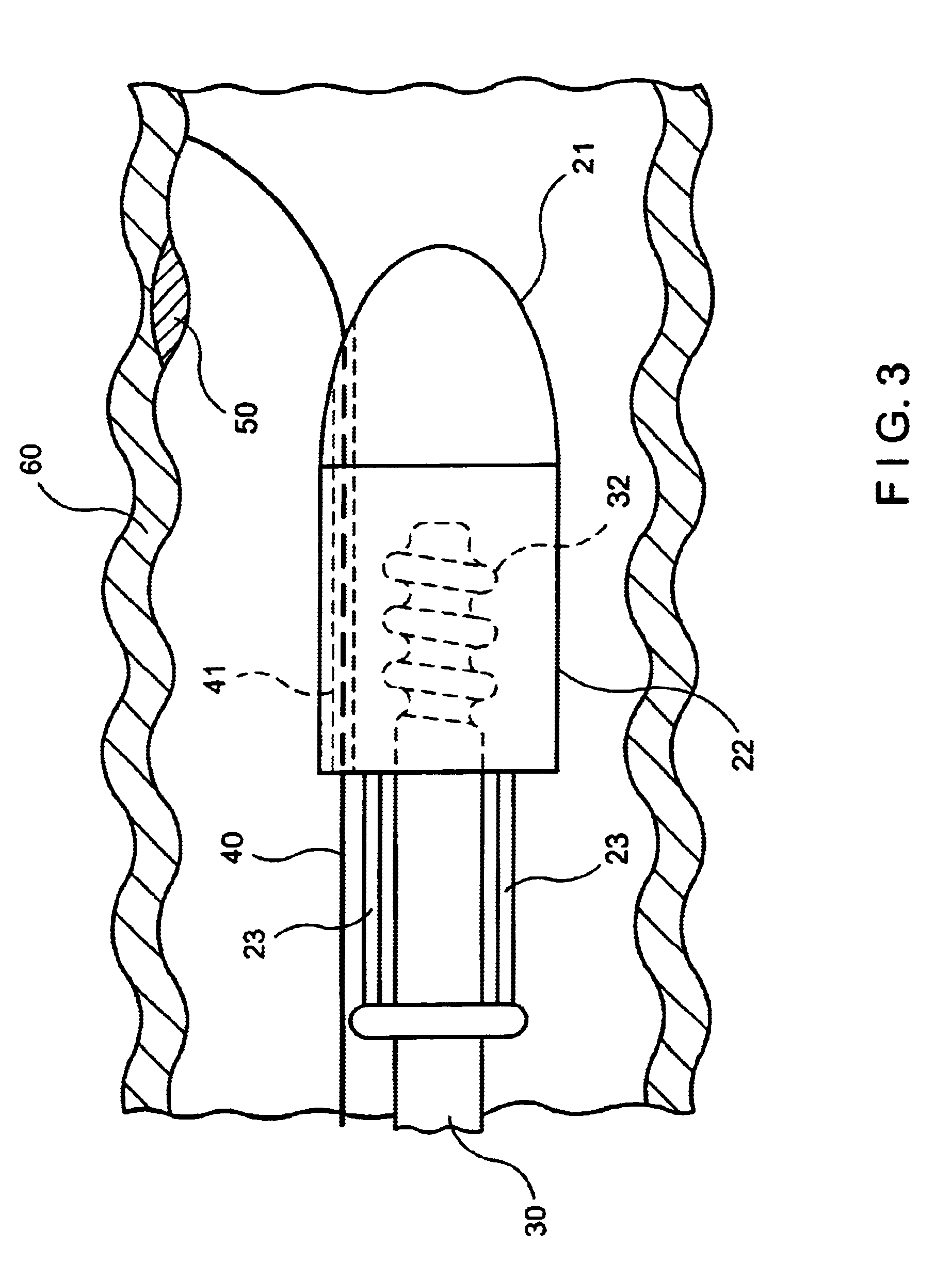Endoscopic resection devices
a technology of endoscopic resection and resection device, which is applied in the direction of surgical staples, applications, manufacturing tools, etc., can solve the problems of insufficient steering and/or viewing capabilities, partial or complete loss of mobility of patients, and traumatic incisions for patients
- Summary
- Abstract
- Description
- Claims
- Application Information
AI Technical Summary
Problems solved by technology
Method used
Image
Examples
Embodiment Construction
1. Field of the Invention
The present invention relates generally to full-thickness resection devices (FTRDs) and methods of using such devices to perform localized resections of lesions in organs, for example, substantially tubular organs such as the colon. The present invention has particular application to transanal and transoral surgical procedures, although it is not limited thereto.
2. Description of the Related Art
Resection procedures involve excising a portion of an organ, approximating the surrounding tissue together to close up a hole created thereby, and removing any excess tissue caused by the approximation. Various conventional devices and procedures are available for resecting lesions in substantially tubular organs.
For example, several known resection devices and procedures require at least one incision in an area near the portion of the organ to be excised. The incision is required to allow the physician to access the organ section to be excised and guide the device to...
PUM
| Property | Measurement | Unit |
|---|---|---|
| thickness | aaaaa | aaaaa |
| distance | aaaaa | aaaaa |
| transparent | aaaaa | aaaaa |
Abstract
Description
Claims
Application Information
 Login to View More
Login to View More - R&D
- Intellectual Property
- Life Sciences
- Materials
- Tech Scout
- Unparalleled Data Quality
- Higher Quality Content
- 60% Fewer Hallucinations
Browse by: Latest US Patents, China's latest patents, Technical Efficacy Thesaurus, Application Domain, Technology Topic, Popular Technical Reports.
© 2025 PatSnap. All rights reserved.Legal|Privacy policy|Modern Slavery Act Transparency Statement|Sitemap|About US| Contact US: help@patsnap.com



